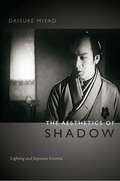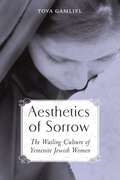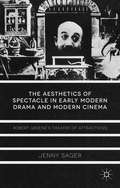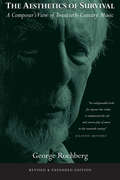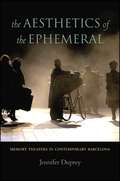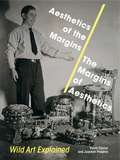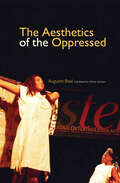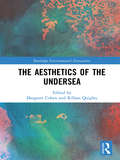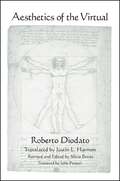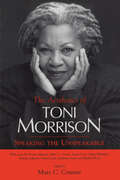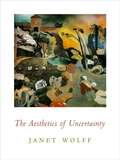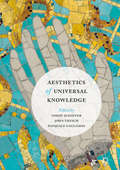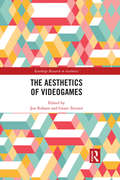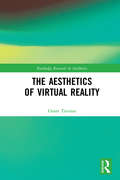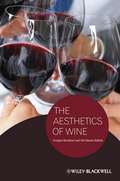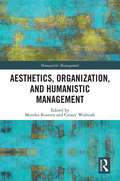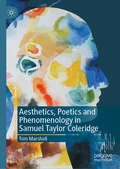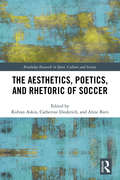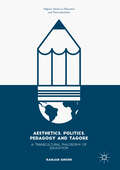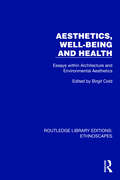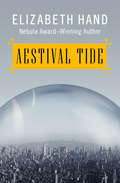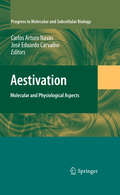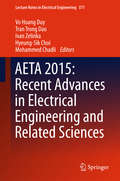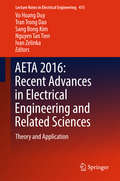- Table View
- List View
The Aesthetics of Shadow: Lighting and Japanese Cinema
by Daisuke MiyaoIn this revealing study, Daisuke Miyao explores "the aesthetics of shadow" in Japanese cinema in the first half of the twentieth century. This term, coined by the production designer Yoshino Nobutaka, refers to the perception that shadows add depth and mystery. Miyao analyzes how this notion became naturalized as the representation of beauty in Japanese films, situating Japanese cinema within transnational film history. He examines the significant roles lighting played in distinguishing the styles of Japanese film from American and European film and the ways that lighting facilitated the formulation of a coherent new Japanese cultural tradition. Miyao discusses the influences of Hollywood and German cinema alongside Japanese Kabuki theater lighting traditions and the emergence of neon commercial lighting during this period. He argues that lighting technology in cinema had been structured by the conflicts of modernity in Japan, including capitalist transitions in the film industry, the articulation of Japanese cultural and national identity, and increased subjectivity for individuals. By focusing on the understudied element of film lighting and treating cinematographers and lighting designers as essential collaborators in moviemaking, Miyao offers a rereading of Japanese film history.
Aesthetics of Sorrow: The Wailing Culture of Yemenite Jewish Women
by Tova GamlielThe term "wailing culture" includes an array of women's behaviors and beliefs following the death of a member of their ethnic group and is typical of Jewish life in Yemeni culture. Central to the practice is wailing itself--a special artistic genre that combines speech with sobbing into moving lyrical poetry that explores the meaning of death and loss. In Aesthetics of Sorrow: The Wailing Culture of Yemenite Jewish Women, Tova Gamliel decodes the cultural and psychological meanings of this practice in an ethnography based on her anthropological research among Yemenite Jewish communities in Israel in 2001-2003. Based on participant-observervation in homes of the bereaved and on twenty-four in-depth interviews with wailing women and men, Gamliel illuminates wailing culture level by level: by the circles in which the activity takes place; the special areas of endeavor that belong to women; and the broad social, historical, and religious context that surrounds these inner circles. She discusses the main themes that define the wailing culture (including the historical origins of women's wailing generally and of Yemenite Jewish wailing in particular), the traits of wailing as an artistic genre, and the wailer as a symbolic type. She also explores the role of wailing in death rituals, as a therapeutic expertise endowed with unique affective mechanisms, as an erotic performance, as a livelihood, and as an indicator of the Jewish exile. In the end, she considers wailing at the intersection of tradition and modernity and examines the study of wailing as a genuine methodological challenge. Gamliel brings a sensitive eye to the vanishing practice of wailing, which has been largely unexamined by scholars and may be unfamiliar to many outside of the Middle East. Her interdisciplinary perspective and her focus on a uniquely female immigrant cultural practice will make this study fascinating reading for scholars of anthropology, gender, folklore, psychology, performance, philosophy, and sociology.
The Aesthetics of Spectacle in Early Modern Drama and Modern Cinema
by Jenny SagerExamining the work of the Elizabethan playwright, Robert Greene, this book argues that Greene's plays are innovative in their use of spectacle. Its most striking feature is the use of the one-to-one analogies between Greene's drama and modern cinema, in order to explore the plays' stage effects.
The Aesthetics of Survival
by George RochbergA revised paperback edition of composer George Rochberg's landmark essays
The Aesthetics of the Ephemeral: Memory Theaters in Contemporary Barcelona
by Jennifer DupreyIn The Aesthetics of the Ephemeral, Jennifer Duprey examines five contemporary plays from Barcelona: Olors and Testament by Josep Maria Benet i Jornet, Antígona by Jordi Coca, Forasters by Sergi Belbel, and Temptació by Carles Batlle. She argues that in both the theatrical text and its performance an aesthetics of the ephemeral materializes that is related to specific manifestations of cultural and historical memory in Spain and Catalonia. These manifestations of memory include historical concerns such as the possibility of another form of justice in predicaments of violence after the Civil War, and they also include contemporary issues such as the production of ruins by the processes of gentrification in Barcelona, the complexity of immigration in Spain, and the destruction or preservation of Catalan cultural legacies. In her analysis of these topics, Duprey engages and expands on theories related to questions of subjectivity and identity in late modernity. This book will be of interest to those concerned with Iberian cultural studies and with how theater reflects on and contributes to contemporary political dialogue.
Aesthetics of the Margins / The Margins of Aesthetics: Wild Art Explained
by David Carrier Joachim Pissarro"Wild Art" refers to work that exists outside the established, rarified world of art galleries and cultural channels. It encompasses uncatalogued, uncommodified art not often recognized as such, from graffiti to performance, self-adornment, and beyond. Picking up from their breakthrough book on the subject, Wild Art, David Carrier and Joachim Pissarro here delve into the ideas driving these forms of art, inquire how it came to be marginalized, and advocate for a definition of "taste," one in which each expression is acknowledged as being different while deserving equal merit.Arguing that both the "art world" and "wild art" have the same capacity to produce aesthetic joy, Carrier and Pissarro contend that watching skateboarders perform Christ Air, for example, produces the same sublime experience in one audience that another enjoys while taking in a ballet; therefore, both mediums deserve careful reconsideration. In making their case, the two provide a history of the institutionalization of "taste" in Western thought, point to missed opportunities for its democratization in the past, and demonstrate how the recognition and acceptance of "wild art" in the present will radically transform our understanding of contemporary visual art in the future.Provocative and optimistic, Aesthetics of the Margins / The Margins of Aesthetics rejects the concept of "kitsch" and the high/low art binary, ultimately challenging the art world to become a larger and more inclusive place.
Aesthetics of the Margins / The Margins of Aesthetics: Wild Art Explained
by David Carrier Joachim Pissarro“Wild Art” refers to work that exists outside the established, rarified world of art galleries and cultural channels. It encompasses uncatalogued, uncommodified art not often recognized as such, from graffiti to performance, self-adornment, and beyond. Picking up from their breakthrough book on the subject, Wild Art, David Carrier and Joachim Pissarro here delve into the ideas driving these forms of art, inquire how it came to be marginalized, and advocate for a definition of “taste,” one in which each expression is acknowledged as being different while deserving equal merit.Arguing that both the “art world” and “wild art” have the same capacity to produce aesthetic joy, Carrier and Pissarro contend that watching skateboarders perform Christ Air, for example, produces the same sublime experience in one audience that another enjoys while taking in a ballet; therefore, both mediums deserve careful reconsideration. In making their case, the two provide a history of the institutionalization of “taste” in Western thought, point to missed opportunities for its democratization in the past, and demonstrate how the recognition and acceptance of “wild art” in the present will radically transform our understanding of contemporary visual art in the future.Provocative and optimistic, Aesthetics of the Margins / The Margins of Aesthetics rejects the concept of “kitsch” and the high/low art binary, ultimately challenging the art world to become a larger and more inclusive place.
The Aesthetics of the Oppressed
by Augusto BoalAugusto Boal's workshops and theatre exercises are renowned throughout the world for their life-changing effects. At last this major director, practitioner, and author of many books on community theatre speaks out about the subjects most important to him – the practical work he does with diverse communities, the effects of globalization, and the creative possibilities for all of us.
The Aesthetics of the Undersea (Routledge Environmental Humanities)
by Margaret Cohen Killian QuigleyAmong global environments, the undersea is unique in the challenges it poses – and the opportunities it affords – for sensation, perception, inquiry, and fantasy. The Aesthetics of the Undersea draws case studies in such potencies from the subaqueous imaginings of Western culture, and from the undersea realities that have inspired them. The chapters explore aesthetic engagements with underwater worlds, and sustain a concern with submarine "sense," in several meanings of that word: when submerged, faculties and fantasies transform, confronting human subjects with their limitations while enlarging the apparent scope of possibility and invention. Terrestrially-established categories and contours shift, metamorphose, or fail altogether to apply. As ocean health acquires an increasing share of the global environmental imaginary, the histories of submarine sense manifest ever-greater importance, and offer resources for documentation as well as creativity. The chapters deal with the sensory, material, and formal provocations of the underwater environment, and consider the consequences of such provocations for aesthetic and epistemological paradigms. Contributors, who hail from the United States, United Kingdom and Australia, include scholars of literature, art, new media, music and history. Cases studies range from baroque and rococo fantasies to the gothic, surrealism, modernism, and contemporary installation art. By juxtaposing early modern and Enlightenment contexts with matters of more recent – and indeed contemporary – importance, The Aesthetics of the Undersea establishes crucial relations among temporally remote entities, which will resonate across the environmental humanities.
Aesthetics of the Virtual (SUNY series in Contemporary Italian Philosophy)
by Roberto DiodatoArguing that the virtual body is something new—namely, an entity that from an ontological perspective has only recently entered the world—Roberto Diodato considers the implications of this kind of body for aesthetics. Virtual bodies insert themselves into the space opened up by the famous distinction in Aristotle's Physics between natural and artificial beings—they are both. They are beings that are simultaneously events; they are images that are at once internal and external; they are ontological hybrids that exist only in the interaction between logical-computational text and human bodies endowed with technological prostheses. Pursuing this line of thought, Diodato reconfigures classic aesthetic concepts such as mimesis, representation, the relation between illusion and reality, the nature of images and imagination, and the theory of sensory knowledge.
The Aesthetics of Toni Morrison: Speaking the Unspeakable
by Marc C. ConnerNobel laureate Toni Morrison's novels have almost exclusively been examined as sagas illuminating history, race, culture, and gender politics. This gathering of eight essays by top scholars probes Morrison's novels and her growing body of nonfiction and critical work for the complex and potent aesthetic elements that have made her a major American novelist of the twentieth century. Through traditional aesthetic concepts such as the sublime, the beautiful, and the grotesque, through issues of form, narrative, and language, and through questions of affect and reader response, the nine essays in this volume bring into relief the dynamic and often overlooked range within Morrison's writing. Employing aesthetic ideas that range from the ancient Greeks to contemporary research in the black English oral tradition, The Aesthetics of Toni Morrison shows the potency of these ideas for interpreting Morrison's writing. This is a force Morrison herself has often suggested in her claims that Greek tragedy bears a striking similarity to “Afro-American communal structures.” At the same time each essay attends to the ways in which Morrison also challenges traditional aesthetic concepts, establishing the African American and female voices that are essential to her sensibility. The result is a series of readings that simultaneously expands our understanding of Morrison's work and also provokes new thinking about an aesthetic tradition that is nearly 2,500 years old. These essays offer a rich complement to the dominant approaches in Morrison scholarship by revealing aspects of her work that purely ideological approaches have obscured or about which they have remained oddly silent. Each essay focuses particularly on the relations between the aesthetic and the ethical in Morrison's writing and between the artistic production and its role in the world at large. These relations show the rich political implications that aesthetic analysis engenders. By treating both Morrison's fiction and her nonfiction, the essays reveal a mind and imagination that have long been intimately engaged with the questions and traditions of the aesthetic domain. The result is a provocative and original contribution to Morrison scholarship, and to scholarship in American letters generally.
The Aesthetics Of Uncertainty (Columbia Themes In Philosophy, Social Criticism, And The Arts Ser.)
by Janet WolffAesthetics of Universal Knowledge
by Simon Schaffer John Tresch Pasquale GagliardiThis volume presents innovative and provocative arguments about the claims of universal knowledge schemes and the different aesthetic and material forms in which such claims have been made and executed. Contributors take a close look at everything from religious pilgrimages, museums, and maps of the world, to search engines and automated GPS. This collection of essays and debates is the result of a major international dialogue held at the Fondazione Giorgio Cini in Venice, Italy. Current obsessions in information technology, communications theory, and digital culture often concern the value and possibility of a grand accumulation of universally accessible forms of knowledge: total libraries, open data bases, ubiquitous computing, and 'smart' technologies. These obsessions have important social and philosophical origins, and they raise profound questions about the very nature of knowledge and its organization. This volume's contributors draw on the histories of maps and of encyclopedias, worldviews and visionary collections, to make sense of the crucial relation between the way the world is known and how it might be displayed and transformed.
The Aesthetics of Videogames (Routledge Research in Aesthetics)
by Jon Robson Grant TavinorThis collection of essays is devoted to the philosophical examination of the aesthetics of videogames. Videogames represent one of the most significant developments in the modern popular arts, and it is a topic that is attracting much attention among philosophers of art and aestheticians. As a burgeoning medium of artistic expression, videogames raise entirely new aesthetic concerns, particularly concerning their ontology, interactivity, and aesthetic value. The essays in this volume address a number of pressing theoretical issues related to these areas, including but not limited to: the nature of performance and identity in videogames; their status as an interactive form of art; the ethical problems raised by violence in videogames; and the representation of women in videogames and the gaming community. The Aesthetics of Videogames is an important contribution to analytic aesthetics that deals with an important and growing art form.
The Aesthetics of Virtual Reality (Routledge Research in Aesthetics)
by Grant TavinorThis is the first book to present an aesthetics of virtual reality media. It situates virtual reality media in terms of the philosophy of the arts, comparing them to more familiar media such as painting, film and photography. When philosophers have approached virtual reality, they have almost always done so through the lens of metaphysics, asking questions about the reality of virtual items and worlds, about the value of such things, and indeed, about how they may reshape our understanding of the "real" world. Grant Tavinor finds that approach to be fundamentally mistaken, and that to really account for virtual reality, we must focus on the medium and its uses, and not the hypothetical and speculative instances that are typically the focus of earlier works. He also argues that much of the cultural and metaphysical hype around virtual reality is undeserved. But this does not mean that virtual reality is illusory or uninteresting; on the contrary, it is significant for the altogether different reason that it overturns much of our understanding of how representational media can function and what we can use them to achieve. The Aesthetics of Virtual Reality will be of interest to scholars and advanced students working in aesthetics, philosophy of art, philosophy of technology, metaphysics, and game studies.
The Aesthetics of Wine
by Ole M. Skilleas Douglas BurnhamThe Aesthetics of Wine shows that discussing wine within the framework of aesthetics both benefits our understanding of wine as a phenomenon, while also challenging some of the basic assumptions of the tradition of aesthetics.Analyzes the appreciation of wine as an aesthetic practice. Tackles prejudices against bodily senses, showing how they distort traditional aesthetic theory Represents the beginnings of a reformulation of general aesthetics
Aesthetics, Organization, and Humanistic Management (Humanistic Management)
by Monika KosteraThis book is a reaction to the reductionist and exploitative ideas dominating the mainstream contemporary management discourse and practice, and an attempt to broaden the horizons of possibility for both managers and organization scholars. It brings together the scholarly fields of humanistic management and organizational aesthetics, where the former brings in the unshakeable focus on the human condition and concern for dignity, emancipation, and the common good, while the latter promotes reflection, openness, and appreciation for irreducible complexity of existence. It is a journey towards wholeness undertaken by a collective of management and organization theorists, philosophers, artists, and art curators. Reading this book’s contributions can help both academics and practitioners work towards building organizational practices aimed at (re)acquiring wholeness by developing aesthetic awareness allowing for more profound understandings of performativity, insights into the dynamics of power, appreciation of ambiguity and ambivalence, and a much needed grasp of complexity. The varied ways of engaging with art explored by the authors promote imaginative insights into and reflection on the beauty and vicissitudes of organizing, of management knowledge and collective expression. It will be of interest to researchers, academics, practitioners, and students in the fields of organizational theory and practice, business and management history, human resource management, and culture management.
Aesthetics, Poetics and Phenomenology in Samuel Taylor Coleridge
by Tom MarshallThis book re-evaluates the philosophical status of Samuel Taylor Coleridge by providing an extended comparison between his work and the phenomenological theory of Edmund Husserl. Examining Coleridge’s accounts of the imagination, perception, poetic creativity and literary criticism, it draws a systematic and coherent structure out of a range of Coleridge’s philosophical writing. In addition, it also applies the principles of Coleridge’s philosophy to an interpretation of his own poetic output.
The Aesthetics, Poetics, and Rhetoric of Soccer (Routledge Research in Sport, Culture and Society)
by Ridvan Askin Catherine Diederich Aline BieriSoccer has long been known as 'the beautiful game'. This multi-disciplinary volume explores soccer, soccer culture, and the representation of soccer in art, film, and literature, using the critical tools of aesthetics, poetics, and rhetoric. Including international contributions from scholars of philosophy, literary and cultural studies, linguistics, art history, and the creative arts, this book begins by investigating the relationship between beauty and soccer and asks what criteria should be used to judge the sport’s aesthetic value. Covering topics as diverse as humor, national identity, style, celebrity, and social media, its chapters examine the nature of fandom, the role of language, and the significance of soccer in contemporary popular culture. It also discusses what one might call the ‘stylistics’ of soccer, analyzing how players, fans, and commentators communicate on and off the pitch, in the press, on social media, and in wider public discourse. The Aesthetics, Poetics, and Rhetoric of Soccer makes for fascinating reading for anybody with an interest in sport, culture, literature, philosophy, linguistics, and society.
Aesthetics, Politics, Pedagogy and Tagore: A Transcultural Philosophy of Education (Palgrave Studies in Education and Transculturalism)
by Ranjan GhoshThis book provides a radical rethinking of the prominent Indian thinker Rabindranath Tagore, exploring how his philosophy of education relates to the ideas of Western theorists such as Kant, Plato and Aristotle. Tagore's thoughts on pedagogy, university and formal education are subjected to a fascinating critique within Ghosh's transcultural framework, referencing a wide range of thinkers across varying time periods, places, and cultures, and developing a greater sensitivity to other traditions, languages, and forms of thinking and writing. The book changes the way we have so far thought about the educationist Tagore, and will be of interest to scholars and specialists of literature, Indian history, and philosophy of education. It is political, deeply philosophical and has a transcultural take on our understanding of a variety of issues relating to Tagore and to philosophy of education in general.
Aesthetics, Well-being and Health: Essays within Architecture and Environmental Aesthetics (Routledge Library Editions: Ethnoscapes)
by Birgit ColdIn everyday life, most people do not reflect seriously on the impacts of architecture and environmental aesthetics on their well-being and health. Originally published in 2001 as part of the Ethnoscapes: Current Challenges in the Environmental Social Sciences series, reissued now with a new series introduction, Aesthetics, Well-being and Health: Essays within Architecture and Environmental Aesthetics, is an intriguing volume bringing together professionals working in architecture, planning, urban design and social policy with academics from both humanities and social sciences to provide a broad-based and insightful discussion on how aesthetics affect us emotionally and physically. The essays help us understand our cultural and individual preferences related to the quality of the environment and challenge the common belief that environmental beauty is a matter of personal taste. A wide range of concepts are discussed such as place identity, multi-sensuous and emotional processes, geometrical order and controlled space, architectural plasticity, aesthetically real and virtual values, participative design processes, ethics in architecture, and beauty and happiness. The book highlights the importance for today's society to engage more in aesthetic ethics and to understand the significance of creating aesthetically pleasing environments.
Aestival Tide (The Winterlong Trilogy #2)
by Elizabeth HandElizabeth Hand's Winterlong trilogy continues: Welcome to ArabothIn Aestival Tide,Elizabeth Hand returns to the extraordinary Winterlong universe. In Araboth--the majestic, domed, multi-tiered city of the Ascendants--obsession with beauty and power vents in haunting, horrific ways. The resurrected Margalis Tast'annin has become the Aviator Imperator of the Ascendants, enslaved by his former lover and exiled to the debauched city of Araboth. And the city that was once home to an advanced society is now a shadow of its former self. Now, as the once-in-a-decade Aestival Tide approaches, the formerly great dome teeters on the brink of its own destruction. This ebook features an illustrated biography of Elizabeth Hand including rare images and never-before-seen documents from the author's personal collection.
Aestivation: Molecular and Physiological Aspects (Progress in Molecular and Subcellular Biology #49)
by José Eduardo Carvalho Carlos Arturo NavasNumerous animal species live in environments characterized by a seasonal reduction in the availability of water, which often but not always occurs when temperatures are highest. For many such animals, survival during the toughest season requires spending long periods of time in a rather inactive state known as aestivation. But aestivation is much more than remaining inactive. Successful aestivation requires the selection of a proper microhabitat, variable degrees of metabolic arrest and responsiveness to external stimuli, the ability to sense the proper time of year for emergence, the preservation of inactive tissue, and much more. So, aestivation involves a complex collection of behaviors, ecological associations and physiological adjustments that vary across species in their type, magnitude and course. This book seeks to explore the phenomenon of aestivation from different perspectives and levels of organization, ranging from microhabitat selection to genetic control of physiological adjustments. It brings together authors from across the world working on different systematic groups, approaches, and questions, but who are all ultimately working to better understand the complex issue of aestivation.
AETA 2015: Recent Advances in Electrical Engineering and Related Sciences (Lecture Notes in Electrical Engineering #371)
by Ivan Zelinka Mohammed Chadli Vo Hoang Duy Tran Trong Dao Hyeung-Sik ChoiThis proceeding bookconsists of 10 topical areas of selected papers like: telecommunication, powersystems, robotics, control system, renewable energy, power electronics, computerscience and more. All selected papers represent interesting ideasand state of the art overview. Readers will find interesting papers of those areasabout designand implement of dynamic positioning control system for USV, schedulingproblems, motor control, backtracking search algorithm for distribution networkand others. All selected papers represent interestingideas and state of art overview. Theproceeding book will also be a resource and material for practitioners who wantto apply discussed problems to solve real-life problems in their challengingapplications. It is alsodevoted to the studies of common and related subjects in intensive researchfields of modern electric, electronic and related technologies. For thesereasons, we believe that this proceeding book will be useful for scientists andengineers working in the above-mentioned fields of research applications.
AETA 2016: Theory and Application (Lecture Notes in Electrical Engineering #415)
by Ivan Zelinka Vo Hoang Duy Tran Trong Dao Sang Bong Kim Nguyen Tan TienThese lecture notes present selected topics concerning a wide range of electrical and electronics applications, highlighting innovative approaches and offering state-of-the-art overviews. The book is divided into 14 topical areas, including e. g. telecommunication, power systems, robotics, control systems, renewable energy, mechanical engineering, computer science and more. Readers will find revealing papers on the design and implementation of control algorithms for automobiles and electrohydraulic systems, efficient protocols for vehicular ad hoc networks and motor control, and energy-saving methods that can be applied in various fields of electrical engineering. The book offers a valuable resource for all practitioners who want to apply the topics discussed to solve real-world problems in their challenging applications. Offering insights into common and related subjects in the research fields of modern electrical, electronic and related technologies, it will also benefit all scientists and engineers working in the above-mentioned fields.
